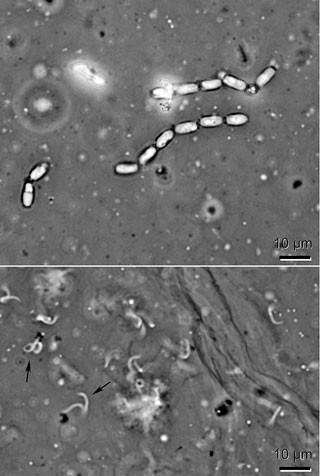Excystation and gregarine species isolation
Gregarine speciation must involve the genetic isolation and divergence of gregarine gene pools. Thus the fundamental underlying question of gregarine biodiversity is how such isolation occurs, that is, what species isolating mechanisms are at work among closely related gregarines. Host specificity is generally regarded as fairly strict among gregarines, thus an obvious potenital isolating mechanism is the ability to discriminate among hosts, excysting in the natural host but not an unnatural host. An experimental excystation assay was used to test the potential species isolating effects of excystation signaling among gregarines. Oocysts of a single gregarine species, Blabericola migrator, were tested for activation, excystation, and sporozoite motility using intestinal extracts from 11 species of cockroaches representing a cohesive phylogeny of 7 genera, 3 subfamilies, and 2 families of Blattodea. Sporozoite activation, excystation, and motility were observed for all excystation assay replications using intestinal fluid from blaberid hosts, but delayed activation or excystation was observed for all assay replications using intestinal fluid from hosts in the family Blattidae. The study results illustrate a trend toward a generalized excystation signal among gregarines that is conserved across the host clade at a subfamily or family level, but is unlikely to play a significant role as a species isolating mechanism among sibling gregarine species. This project is complete, the resulting publication is available, below.
Steele, S. M., D. T. Clopton, and R. E. Clopton. 2012. Excystation signals do not isolate gregarine gene pools: experimental excystation of Blabericola migrator among eleven species of cockroaches. Journal of Parasitology 98(5): 946-950.PDF
Shelby Steele is the lead researcher on this project.

